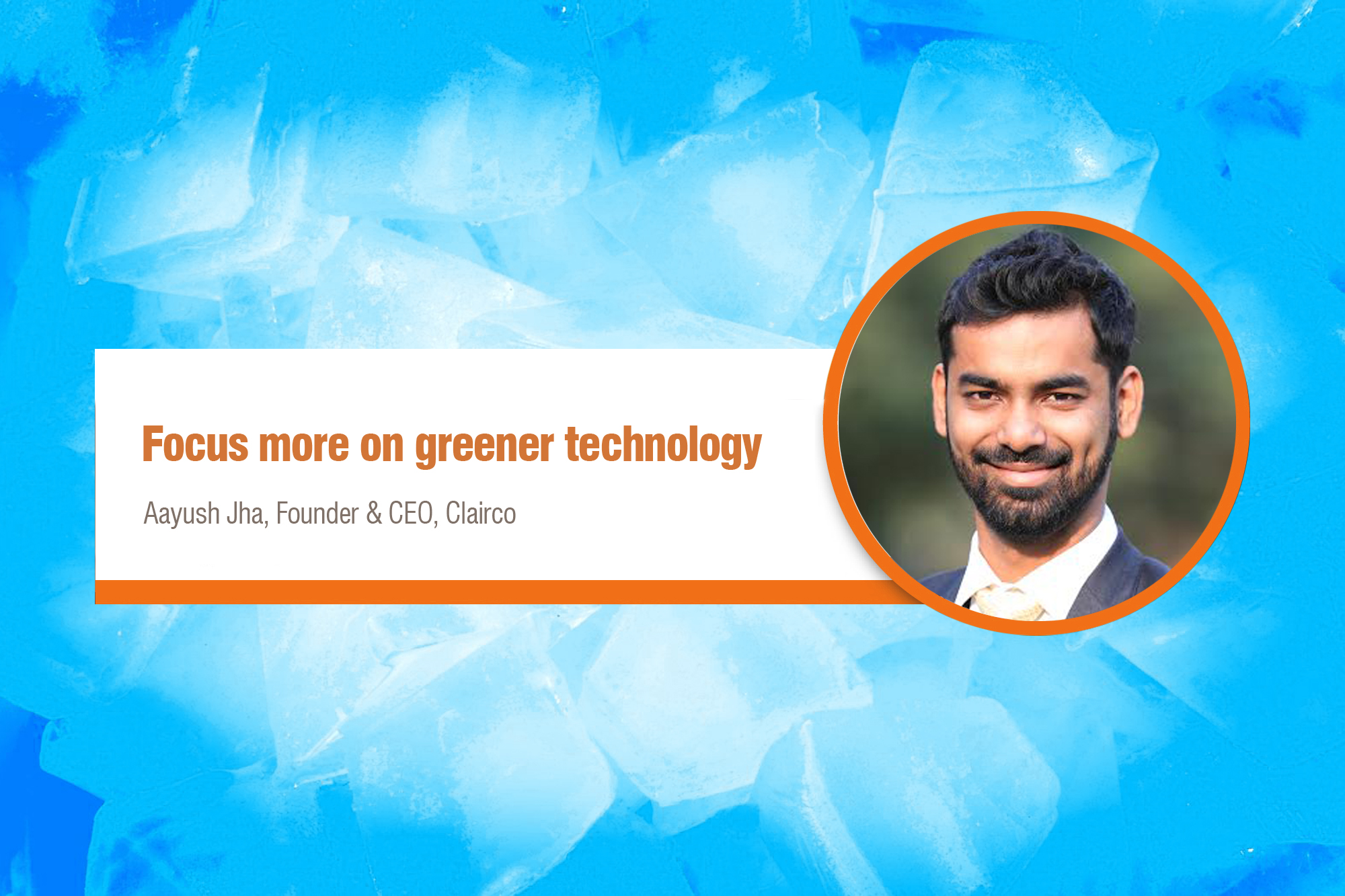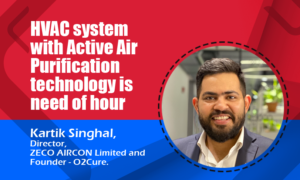In an interaction with Thermal Control Business Update, Aayush Jha, Founder & CEO, Clairco, says that although the Make in India initiative has helped the manufacturers, Digital India has done very little for the HVAC industry. He suggests that India can gain more with the ongoing trade tensions between US and China.
‘Make in India’ was said to be the dawn of ‘New India’. What do you think has ‘Make in India’ made for India’s HVAC sector?
A lot of new companies have recently come up with different HVAC solutions. Massive manufacturing plants have been setup in Gujarat and elsewhere. E-commerce companies have launched their own brands and consumer durables such as air-conditioners. This has probably been possible to quite some extent due to the Make in India initiative. We at Clairco are into air quality monitoring and I’m pretty sure that monitoring as an industry has grown, but I won’t be able to comment on how much Make in India was part of it.
Overall, Make in India has helped HVAC manufacturers and we also need to understand that this is an ongoing process and it has to increase. With the US-China trade war going on, China’s exports will go down and economies such as India would have to take full benefit of that. Now is the right time for Indian HVAC market to grow incredibly fast.
I hope Make in India continues to give better credit, reduce taxation, and help industries including start-ups like us to improve on operational profit.
How do you view Digital India’s efforts to empower India in the absence of IT awareness programmes in HVAC industry? How can Digital India be more user-centric?
In my humble opinion, I really don’t think Digital India has done a lot for the HVAC industry. There are people looking at HVAC as a full time employment, there are ITIs and other courses available, a couple of private companies have taken up the mantle for education and training of individuals in HVAC industry, but I strongly feel that the Indian HVAC industry is fairly behind in terms of newer technologies to take on international markets. I’m not sure if Digital India has been able to do what was promised.
What do you think needs to be done to reboot and realign the priorities of Make in India and Digital India so as to turn India into the hub of HVAC?
In Make in India we need to have special SEZs or manufacturing areas where we could reap tax benefits. If you look at China, they were able to grow because of incredible tax reforms, which were able to help them reduce the overall tax burden the companies had.
Similarly, with Digital India, there should be efforts made for research and development. At Clairco, we’re very focused on R&D and technology. But, we are not able to get any sort of grants from the government to actually work on the technology or software side. For example, if you’re generating so much air quality data, we need to hire expensive engineers to make algorithms that can predict the air quality. But, for a start up like us, it gets difficult. Hence, government grants would help us improve the technology and the implementation faster. I really believe that we need to focus on two things; reduce tax burden and increase fund for R&D.
India’s air quality monitoring and purification services have gone down day by day. What do you think needs to be done for curbing the hazardous levels for citizens?
India’s air quality has really gone down and all tier 1 and a most of the tier 2 cities have incredibly bad air quality. Agricultural practices, construction, vehicular movements, and India’s naturally loose and dusty soil are some of the reasons why we have a lot of pollution in India.
Lot of cities in India are reeling under poor air quality. What needs to be done is very simple; we need to bring down the ancient agricultural practices and have better solutions. In construction, there are laws, which are not being executed. For example, you might’ve seen nets covering the sides of under construction building. It is mandatory to ensure that dust doesn’t escape that area and go into nearby places. Similarly, all industries have some or the other issues, which needs to be addressed.
In heavy construction industries, there’s no air quality monitoring happening. In EU, companies generating lot of air pollution are fined heavily and this should happen in India as well.
India is said to develop its own certification facility for air pollution monitoring equipment. How do you view with its progress and to what extent will it affect India’s air quality?
Certification facility should’ve been there long back, but it’s better late than never. Lot of newer companies or start-ups like us are taking up air quality monitoring, where monitors and sensors are imported from the West. These sensors are calibrated for their environmental situations and locations. These really need to have certification agencies and the cost of certification should be very low. For example, to get a certification done in EU, it will set you back by ₹20-25 lakhs, which is really steep for a start-up. So the certification should be introduced and it would be a very welcome change.
Lack of HVAC technical expertise at execution level has been one of the major hurdles in green building projects. How do you see these issues can be addressed?
The HVAC industry in India, especially if you look from a green building perspective, has to be much more energy efficient. Most of the manufacturers such as HVAC companies do not have the expertise or R&D to help them move to next generation of energy efficient ACs. If you look at green buildings, the overall power consumption has to be lower than a particular standard for them to get certification. We need more companies to invest in R&D and focus on greener technologies. HVACs in India consume incredible amount of power, around 85 per cent of the building’s energy, which needs to be repaired as soon as possible.
Considering the growing pollution levels in our country, how do the present pollution control solutions help in maintaining clean air?
Lot of new technologies are being introduced. If you bring down the overall power consumption of cities, the thermal power plants, which are making a lot of CO2 and other carbon-based gases will go down. We really need to move to the next level of energy efficiency. Unless and until we bring down the overall power consumption of cities, the air pollution will not go down. Secondly, India is moving to BS VI for all vehicular emissions, which is a great move to bring certain ease to the overall pollution levels. However, the CPCB, police or administration at the ground level should focus on implementing the laws, which are already there.
Controlling pollution is essential for the environment. But, what are the unseen challenges faced during the implementation of pollution control mechanisms in industrial premises?
Very less industries and plants have air quality monitoring available. Even if they are monitoring air quality to a certain level, they are monitoring very few parameters. For example, almost no thermal plant or steel plant is measuring particulate matter around them. They are not measuring CO2 in realtime. Even if they are, it’s not being published anywhere. What I’m trying to say is unless and until you monitor air quality, you cannot solve that problem. All manufacturing plants need to have air quality monitoring as a compulsion. The government will have to focus on that. If they have the data they can take measures to ensure cleaner air quality and also levy fines.
I hope Make in India continues to give better credit, reduce taxation,and help industries including start-ups to improve on operational profit
Aayush Jha, Founder & CEO, Clairco
Cookie Consent
We use cookies to personalize your experience. By continuing to visit this website you agree to our Terms & Conditions, Privacy Policy and Cookie Policy.















